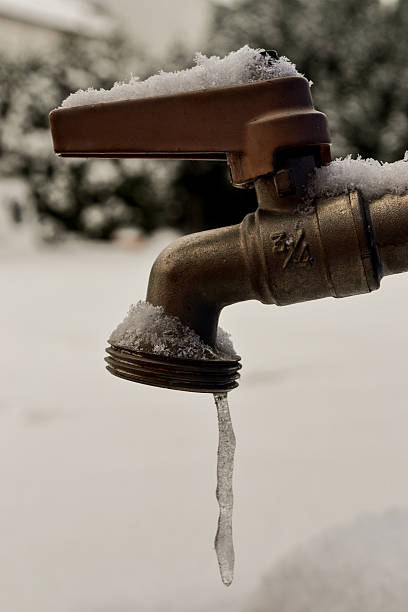Preventing Frozen Pipes in Cold Weather: Essential Advice
Preventing Frozen Pipes in Cold Weather: Essential Advice
Blog Article
Listed here underneath you'll find more very good data all about How to prepare your home plumbing for winter weather.

Winter can damage your pipes, especially by freezing pipelines. Right here's how to stop it from taking place and what to do if it does.
Introduction
As temperatures decrease, the danger of frozen pipes rises, possibly causing costly repair services and water damages. Comprehending how to stop icy pipelines is crucial for house owners in cool climates.
Avoidance Tips
Protecting at risk pipes
Cover pipes in insulation sleeves or use heat tape to shield them from freezing temperatures. Concentrate on pipes in unheated or exterior locations of the home.
Heating strategies
Maintain indoor rooms properly heated up, specifically locations with plumbing. Open closet doors to permit cozy air to circulate around pipelines under sinks.
Exactly how to recognize frozen pipes
Look for reduced water circulation from faucets, uncommon smells or noises from pipes, and visible frost on subjected pipelines.
Long-Term Solutions
Architectural modifications
Take into consideration rerouting pipelines far from outside walls or unheated locations. Include added insulation to attics, basements, and crawl spaces.
Upgrading insulation
Purchase top quality insulation for pipes, attics, and wall surfaces. Appropriate insulation assists maintain consistent temperatures and decreases the threat of frozen pipelines.
Safeguarding Outside Pipes
Garden pipes and outside taps
Detach and drain yard tubes before wintertime. Install frost-proof spigots or cover outdoor taps with protected caps.
Comprehending Icy Pipes
What causes pipes to freeze?
Pipelines freeze when exposed to temperatures below 32 ° F (0 ° C) for extended durations. As water inside the pipelines freezes, it increases, putting pressure on the pipe walls and possibly creating them to rupture.
Dangers and damages
Frozen pipes can bring about water disturbances, building damage, and pricey repairs. Burst pipelines can flood homes and create considerable architectural damages.
Indications of Frozen Piping
Identifying frozen pipes early can avoid them from breaking.
What to Do If Your Pipelines Freeze
Immediate actions to take
If you believe icy pipelines, maintain faucets open up to eliminate pressure as the ice thaws. Utilize a hairdryer or towels taken in hot water to thaw pipes slowly.
Conclusion
Stopping icy pipelines calls for aggressive actions and fast actions. By recognizing the reasons, indications, and preventive measures, home owners can secure their pipes during winter.
5 Ways to Prevent Frozen Pipes
Drain Outdoor Faucets and Disconnect Hoses
First, close the shut-off valve that controls the flow of water in the pipe to your outdoor faucet. Then, head outside to disconnect and drain your hose and open the outdoor faucet to allow the water to completely drain out of the line. Turn off the faucet when done. Finally, head back to the shut-off valve and drain the remaining water inside the pipe into a bucket or container. Additionally, if you have a home irrigation system, you should consider hiring an expert to clear the system of water each year.
Insulate Pipes
One of the best and most cost-effective methods for preventing frozen water pipes is to wrap your pipes with insulation. This is especially important for areas in your home that aren’t exposed to heat, such as an attic. We suggest using foam sleeves, which can typically be found at your local hardware store.
Keep Heat Running at 65
Your pipes are located inside your walls, and the temperature there is much colder than the rest of the house. To prevent your pipes from freezing, The Insurance Information Institute suggests that you keep your home heated to at least 65 degrees, even when traveling. You may want to invest in smart devices that can keep an eye on the temperature in your home while you’re away.
Leave Water Dripping
Moving water — even a small trickle — can prevent ice from forming inside your pipes. When freezing temps are imminent, start a drip of water from all faucets that serve exposed pipes. Leaving a few faucets running will also help relieve pressure inside the pipes and help prevent a rupture if the water inside freezes.
Open Cupboard Doors
Warm your kitchen and bathroom pipes by opening cupboards and vanities. You should also leave your interior doors ajar to help warm air circulate evenly throughout your home.
.jpg)
As an enthusiastic reader on Preventing and dealing with frozen pipes, I imagined sharing that post was worthwhile. Sharing is caring. One never knows, you may very well be doing someone a favor. I take joy in your readership.
Click Here Report this page